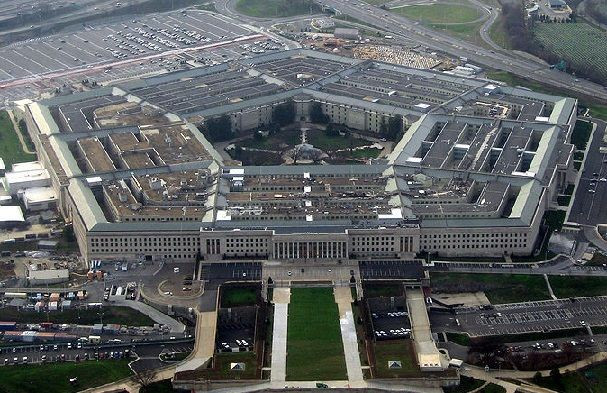Defense Budget 2016: Pentagon Requests Record $534 Billion Budget, Ignores Spending Caps

With the United States facing new threats in the Middle East and a resurgent Russia, the Pentagon unveiled a $534 billion budget on Monday. The baseline budget for fiscal year 2016 breaks defense spending caps that were enacted in 2011 and represents an increase of $38 billion over the previous fiscal year’s budget, making it the biggest in U.S. history in absolute terms.
The budget contains an additional $50.9 billion for Overseas Contingency Operations. However, the contingency budget, which pays for the ongoing engagement in Iraq and Afghanistan and now for the training of Syrian rebels, saw a decrease of 21 percent overall as it dropped around $30 billion to $50.9 billion.
The increased budget ignores the congressionally mandated budget cap of $499 billion, meaning that Congress will have to decide to either lift the spending caps or reduce the Pentagon's budget. But that decision will have to wait until new congressional leaders are sworn in.
In addition to the Pentagon's budget, President Obama’s administration proposed another $27 billion in defense-related spending within other agencies, mostly work on nuclear weapons by the Department of Energy.
The higher defense spending, which bucks the trend of smaller defense budgets over the last four years, comes after the Islamic State group’s advance in Iraq and Syria, and the war in East Ukraine, which has reignited tensions with Russia reminiscent of the Cold War.
"The geopolitical events of the past year only reinforce the need to resource DoD [Department of Defense] at the president's requested funding level as opposed to current law," the Pentagon said in a statement. "As the budget makes clear, a return to sequester-level funding would be irresponsible and dangerous, resulting in a force too small and ill-equipped to respond to the full range of potential threats to the nation.”
According to a Defense One report, the higher defense budget is a “political move” from the White House, aimed at suggesting to Congress that defense spending cannot be cut as the Budget Control Act 2011 specifies it should.
“I think the reason they’re submitting a budget request above budget caps is political,” said Todd Harrison, a senior fellow and budget analyst at the Center for Strategic and Budgetary Assessments, a think tank in Washington, speaking to Defense One. “They really believe we should be spending more on defense, so they don’t want to communicate to Congress or to the public that they would spend less if they submit a budget cut to that level… They may be afraid that Congress would respond, ‘You know, that’s not so bad.’”
As much as $10.6 billion will be spent on 57 F-35 aircraft, which the military is continuing to fund heavily despite delays and technical problems hampering its progress. Other big items include $3 billion for development of the KC-46 tanker, $3.4 billion for 16 P-8 maritime patrol aircraft, $1.3 billion E-2D command-and- control planes, and $1.2 billion for the Air Force’s new stealth bomber. The latter was the subject of the first Super Bowl commercial ever for a warplane, which was broadcast in the Washington, D.C., area during Sunday's game. Northrop is competing against Lockheed Martin and Boeing for the contract to build as many as 100 stealth bombers.
The Navy will get $1.4 billion for a new nuclear missile submarine and $11.6 billion for nine new ships, and will spend $678 million to refit the USS George Washington aircraft carrier, maintaining the Navy’s force at the current level of 11 carriers.
© Copyright IBTimes 2024. All rights reserved.






















